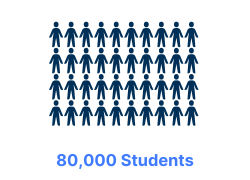
R Programming - Intermediate Training Course
Learn how to use R for data analysis, instructor-led course.
R is a programming language specifically developed for the statistical analysis of data and for producing graphical output. We introduced the core concepts of R programming in our R Basics course. This course, R Programming Intermediate, is the second in our R series and focuses on:
- data manipulation
- basic exploratory data analysis
- creating customised data visualisations
- basic modelling
An experienced trainer will guide you through exercises to practice writing R code, use a variety of different functions, produce graphical output and view the results. Read the full outline here.
R Programming - Intermediate Training Course

Data manipulation, basic exploratory data analysis, customized data visualizations and basic modelling in R.
Frequently Asked Questions
Course Introduction
Our R courses were designed by Tamara Shatar, who holds a PhD in Agricultural Data Science. She focused her extensive experience and skills in modelling using machine learning, simulation and other techniques to create a course with depth and applicability.
The course is consistently well reviewed by students.
"Great structure, material and manual. I have completed programming courses before but this one just made more sense! Looking forward to the Intermediate course." - R Intermediate Sydney.
What is R?
R is an open source and free programming language that was developed for statistical analysis and production of high-quality graphics. It has long been popular with statisticians and academics who make up part of the large active user community behind R. This community has contributed over 15,000 packages that extend the base functionality of R, making it easy to implement a vast range of techniques for data manipulation, analysis and visualization.
Is R compatible with Microsoft?
Microsoft have recognized the power of R and offer not only their own enhanced distribution of R, Microsoft R Open, but the ability to use R within Microsoft products and services such as Power BI, SQL Server / SQL Server Machine Learning Services and Visual Studio. Microsoft have also developed several packages, including the Microsoft Machine Learning Package for R. Check out R scripts in Power BI
What is Remote Training?
Remote training at Nexacu, means our team of experienced trainers will deliver your training virtually. With remote learning students can access our usual classroom training courses via video conferencing, ask questions, participate in discussion and share their screen with the trainer if they need help at any point in the course. Students have the same level of participation and access to the trainer as they would in classroom training sessions.
R Programming Intermediate Course Details


R Programming Intermediate Course Details


R Programming Intermediate Course Details


R Programming Intermediate Course Details


R Programming Intermediate Course Details


R Programming Intermediate Course Details


R Programming Course Outlines
Skills Test
Contact Us
What do I need to know to attend?
You should have attended our R Beginner course and have a basic understanding of R syntax.
It is assumed that you are familiar with:
- basic R syntax
- data types and structures
- know how to subset data
- know how to install and use contributed packages and their functions
- basic familiarity with working in RStudio is helpful.
R Programming Intermediate Learning Outcomes
You will understand and be able to:
- create and manipulate objects
- use functions
- work with relational data
- perform basic exploratory data analysis
- conduct basic modelling and prediction
- find functions to perform specific tasks.
R Programming Intermediate Course Content
- Introduction
- Review of R data types and structures
- Review of common syntax for accessing data in data frames
- Importing Data
- Importing data in RStudio
- Packages and functions to import data into R
- Using code to import data
- Importing data from text files (csv)
- Importing data from Excel
- Workflow in R
- Creating reusable scripts
- Manipulating Data
- The tidyverse
- Summarising data
- Ordering data
- Working with dates
- Convert character to date
- Extract years from dates
- Extract months from dates
- Extract days from dates
- Manipulating Data (cont’d)
- Extract days of the week from dates
- Add columns to a data frame
- Working with strings
- Selecting and reordering columns in a data frame
- Selecting rows based on values
- Grouping data
- Summarising data
- Manipulating Data (cont’d)
- Identifying blank values and non-number numbers
- Working with data that contains missing values and non-number numbers
- Removing missing values from a data set
- Replacing values
- Concatenate strings
- Bin continuous variables into categories
- Working with Relational Data
- Add new variables to a data frame from another
- Mutating joins and merge()
- Filtering joins
- Exporting data to a file
- Basic Exploratory Data Analysis
- Choosing the right chart for your goal
- Choosing the right chart for your data
- Univariate analysis of numeric variables
- Univariate analysis of categorical variables
- Multivariate analysis of numeric variables
- Multivariate analysis of numeric and categorical variables
- Multivariate analysis of categorical variables
- Univariate Analysis
- Exploring the data distribution
- Central tendency
- Spread
- Outliers
- Shape of the distribution
- Visual Representation of Distributions
- Histograms
- Boxplots
- Dot charts / dot plots
- Stem and leaf plots
- Bar and column charts
- Multivariate Analysis
- Scatterplots and scatterplot matrix
- Correlations
- Bar and column charts
- Line charts
- Customising charts in R
- Other graphics options
- Basic Modelling
- Modelling for prediction
- Create a linear model
- How good is the model?
- Assumptions
- Making predictions from the model
 Australia
Australia
 New Zealand
New Zealand
 Singapore
Singapore
 Hong Kong
Hong Kong
 Malaysia
Malaysia
 Philippines
Philippines
 Thailand
Thailand
 Indonesia
Indonesia
 phone
phone
 email
email
 enquiry
enquiry
























